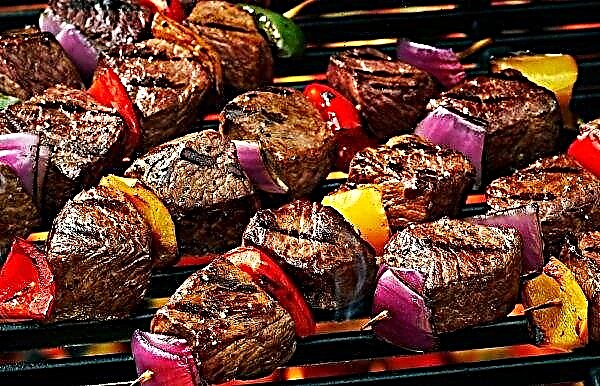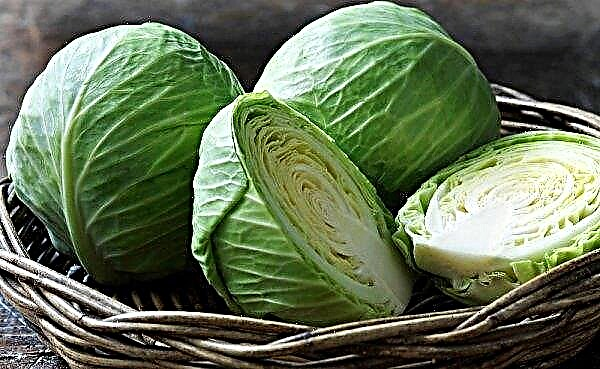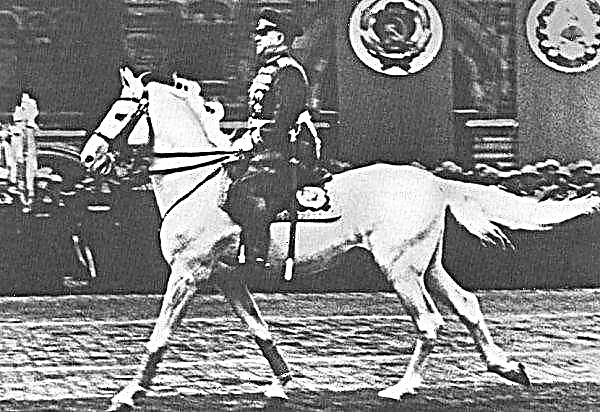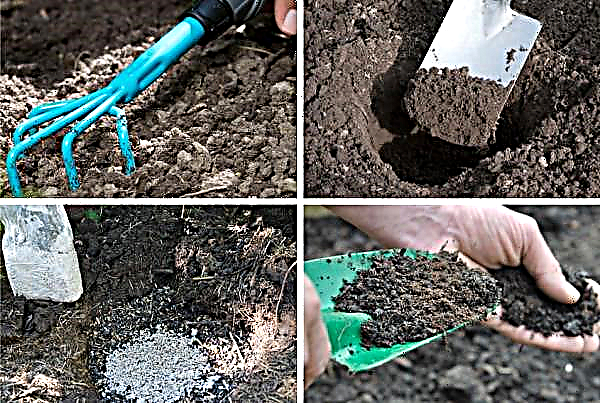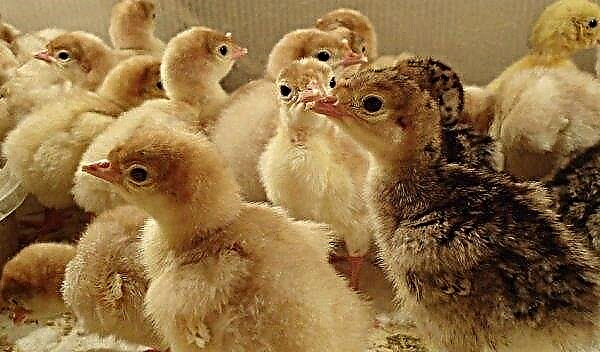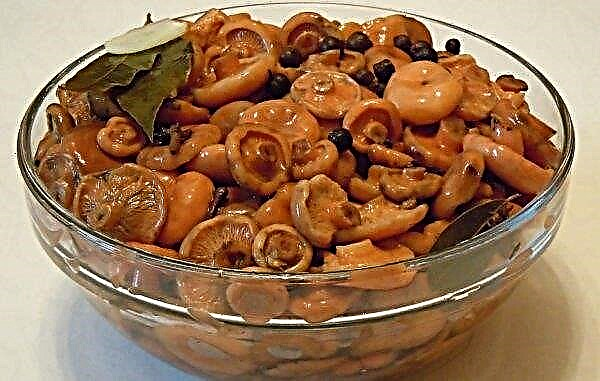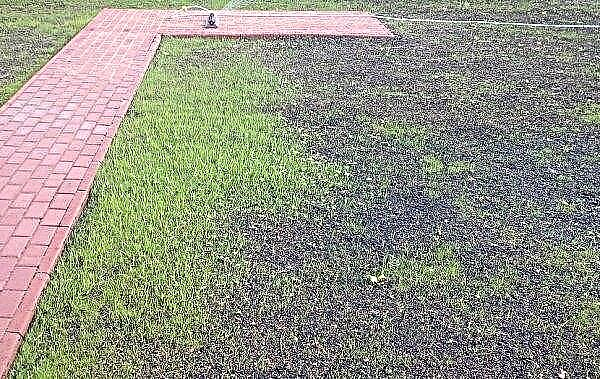In specialized stores, a ready-made substrate for mushroom cultivation is sold, but it can also be made independently. Below, the necessary conditions for the growth of mycelium are considered and a step-by-step method of composting the ingredients for the substrate is described.
Mushroom growing conditions
For a high yield on a mushroom plantation, it is necessary to prepare the correct nutrient medium.
Did you know? Champignons are recommended as a means of getting rid of excess cholesterol, because they contain substances that cause the breakdown of cholesterol plaques.
Its structure should be sufficiently fibrous and include the following substances (average values for dry weight):
- 2% nitrogen;
- 1.5% potassium and phosphorus;
- up to 4% calcium.
The mixture should not contain more than 0.1% ammonia, and its acidity should be maintained in the range of 7.3–7.5 pH. It is necessary to control a constant humidity of 65–70%. Maintaining a balance of nutrients is the key to obtaining a mixture on which you can grow a good crop. Too nutritious compost will lead to an increase in temperature during the period of mycelium growth, and champignons will grow poorly.
Maintaining a balance of nutrients is the key to obtaining a mixture on which you can grow a good crop. Too nutritious compost will lead to an increase in temperature during the period of mycelium growth, and champignons will grow poorly.
Important conditions for growing champignons are also:
- the temperature for the formation of mycelium within + 23 ... + 25 ° C, and for the growth of mushrooms + 15 ... + 17 ° C;
- well-ventilated room, without drafts;
- humidity 75–85%.
Mushrooms do not need special lighting, therefore, most often they are bred in basements, where it is easy to get the above environmental parameters. The room should also have a concrete, not earthen floor. Champignons are also grown in greenhouses, artificially shading them from the sun, and sometimes on beds in shady places of the site.
Video: growing champignons
Ingredients for cooking
The process of preparing the substrate is called composting. Depending on availability, the ingredients may vary, while the technology itself remains unchanged. The main parts of the compost are straw and manure of various types. It should be noted that during the fermentation process, the ingredients laid down will lose up to 30% in weight.
Straw
Wheat or rye straw is used to make compost. In areas where corn is massively grown, its dry ears are often added to the mixture. Dry alfalfa can also be an integral part of the recipe. The substrate should be prepared from at least 100 kg of straw (or half straw and corn, or half half alfalfa and corn), otherwise the fermentation process will not start.
Sawdust
If the farm has access to sawdust, they can become a valuable raw material for compost. Due to its ability to retain moisture for a long time, this component helps maintain the required level of humidity. For the cultivation of mushrooms, only hardwood (linden, birch, hornbeam, etc.) is suitable. The optimal sawdust size is 2-4 mm and they need preliminary heat treatment to avoid mold.
A mixture is prepared with straw for only 15 days with two interruptions according to this recipe:
- 100 kg of wheat straw and sawdust;
- 10 kg of calcium carbonate;
- 15 kg of malt and 5 kg of urea;
- 3 kg of tomoslag.
Manure
Horse manure is the best environment for growing mushrooms, but it can be replaced with livestock or sheep, as well as bird droppings. For 100 kg of plant basis take 75-100 kg of manure or litter.
Other components
Some sources recommend adding urea to the composition of the first layer of straw at the rate of 2 kg of fertilizer per 100 kg of straw. If bird droppings are involved in the mixture, this should not be done, since there are already enough nitrogen compounds in it.
Important! Mullein compost warms up more slowly, so it will take 25–28 days to cook it.
For cooking, you will also need gypsum and water. For 100 kg of a mixture of manure and straw, 30 kg of binding material and a total of up to 2,000 liters of water are taken. The addition of gypsum allows you to control the humidity of the mass, so the given value is adjusted depending on the specific condition of the substrate.
Step cooking
Compost is prepared in an open area with a concrete coating protected from rain by a canopy. The base of the site can also be asphalted, tiled or, in extreme cases, lined with dense film. The compost mixture laid out in layers is called a shoulder and its width should be at least 180 cm. The height of the folded substrate is about 1.5–1.7 m, and its length will depend on the size of the site (an average of 2.5 m). Since the preparation involves moving the mixture from place to place, the site should have a free area for this procedure.
The height of the folded substrate is about 1.5–1.7 m, and its length will depend on the size of the site (an average of 2.5 m). Since the preparation involves moving the mixture from place to place, the site should have a free area for this procedure.
Important! The ambient temperature for fermentation of the mixture should not fall below + 10 ° C.
The process of preparing the substrate is carried out according to this algorithm:
- Pour straw or vegetable mixture abundantly with water (350-450 liters of water per 100 kg) and leave for 3-5 days.
- Lay the first layer of straw or sawdust about 30 cm thick on the site.
- Put a layer of manure on top.
- Moisten the shoulder with water and tamp.
- Lay out the following layers in turn, watering and compacting them. You should get 5-6 layers of each material.
- During the first 5 days, water the shoulder 2 times a day.
- On the sixth - scatter a layer of gypsum on top and gradually transfer the entire mass with a pitchfork to an empty place. Shake each part that is moved at a time and mix well. Moisten dry places. To accurately determine the temperature of heating the compost, a thermometer can be installed in the mixture, the scale of which should reach + 100 ° C.
- After the first interruption, carry out two-time watering again for 5 days.
- On the twelfth day, transfer the mixture again, but the gypsum should not be added. The next 3 days will also require double hydration.
- For the third time, break the collar on days 16-17, moisten again.
- The fourth interruption is performed without adding water for 21-22 days.
- After 3 days, the substrate will be ready for planting mycelium.
The finished compost should be dark brown and loose, after compression in the hand, do not stick together and do not release liquid.
Video: composting
Other cooking tips
If there is the possibility of additional disinfection by steam treatment, the fourth interruption is not carried out. After the third transfer, the substrate on the thirteenth day is moved to a special room for hot steaming. The procedure is carried out at a temperature of + 60 ° C for 10 hours. Steam kills eggs from pests and pathogens. The next 6 days, the mixture is kept at a temperature of + 52 ... + 48 ° C, purifying it from ammonia and dangerous microorganisms.
Did you know? Champignons contain a high percentage of lysine and arginine, which improve human brain activity.
With the third stirring, in order to improve the quality of the finished substrate, you can add malt sprouts in the proportion: 8 kg per ton of compost. The preparation of a substrate for growing champignons requires proportions, a special platform and timely interruption. High-quality compost allows you to get a high yield of mushrooms. After growing them, the compost mixture can be used as organic fertilizer in the garden.


